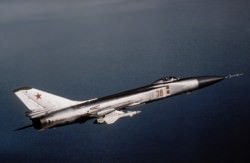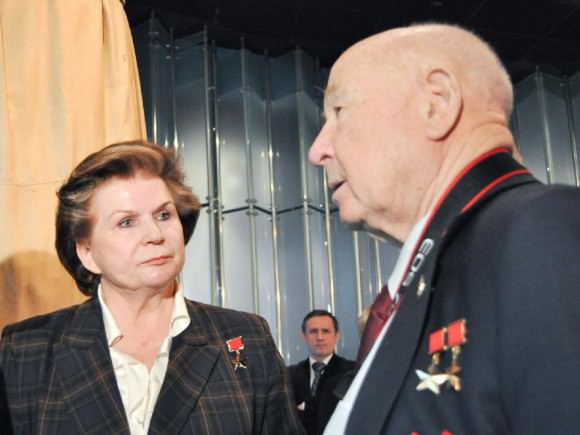On the morning of April 12, 1961, Soviet cosmonaut Yuri Gagarin lifted off aboard Vostok 1 to become the first human in space, spending 108 minutes in orbit before landing via parachute in the Saratov region of the USSR. The soft-spoken and well-mannered Gagarin, just 27 years old at the time, became an instant hero, representing the success of the Soviet space program (Alan Shepard’s shorter, suborbital flight happened less than a month later) to the entire world. Gagarin later went on to become a director for the Cosmonaut Training Center and was preparing for a second space flight. Tragically, he was killed when a MiG-15 aircraft he was piloting crashed on March 27, 1968.
Gagarin’s death has long been shrouded by confusion and controversy, with many theories proposed as to the actual cause. Now, 45 years later, details about what really happened to cause the death of the first man in space have come out — from the first man to go out on a spacewalk, no less.

According to an article published online today on Russia Today (RT.com) former cosmonaut Aleksey Leonov — who performed the first EVA on March 18, 1965 — has revealed details about the accident that killed both Yuri Gagarin and his flight instructor Vladimir Seryogin in March 1968.
Officially the cause of the crash was said to be the ill-fated result of an attempt to avoid a foreign object during flight training in their MiG-15UTI, a two-seated, dual-controlled training version of the widely-produced Soviet aircraft. “Foreign objects” could be anything, from balloons to flocks of birds to airborne debris to… well, you see where one could go with that. (And over the years many have.)
The maneuver led to the aircraft going into a tailspin and crashing, killing both men. But experienced pilots like Gagarin and Seryogin shouldn’t have lost control of their plane like that — not according to Leonov, who has been trying to release details of the event for the past 20 years… if only that the pilots’ families might know the truth.

Now, a declassified report, which Leonov has been permitted to share, shows what actually happened during the training flight: an “unauthorized Su-15 fighter” flew too close to Gagarin’s MiG, disrupting its flight and sending it into a spin.
“In this case, the pilot didn’t follow the book, descending to an altitude of 450 meters,” Leonov says in the RT.com article. “While afterburning the aircraft reduced its echelon at a distance of 10-15 meters in the clouds, passing close to Gagarin, turning his plane and thus sending it into a tailspin — a deep spiral, to be precise — at a speed of 750 kilometers per hour.”
The pilot of the Su-15 — who is still alive — was was not named, a condition of Leonov’s permission to share the information.
According to first woman in space Valentina Tereshkova, who was officially grounded by the government after Gagarin’s death to avoid a loss of another prominent cosmonaut, the details come as a bittersweet relief.
“The only regret here is that it took so long for the truth to be revealed,” Tereshkova said. “But we can finally rest easy.”
Read the full story here on RT.com.


